Abstract
Advances in optical character recognition (OCR) software and computer hardware have stimulated a reevaluation of the technology and its ability to capture structured clinical data from preexisting paper forms. In our pilot evaluation, we measured the accuracy and feasibility of capturing vitals data from a pediatric encounter form that has been in use for over twenty years. We found that the software had a digit recognition rate of 92.4% (95% confidence interval: 91.6 to 93.2) overall. More importantly, this system was approximately three times as fast as our existing method of data entry. These preliminary results suggest that with further refinements in the approach and additional development, we may be able to incorporate OCR as another method for capturing structured clinical data.
Full text
PDF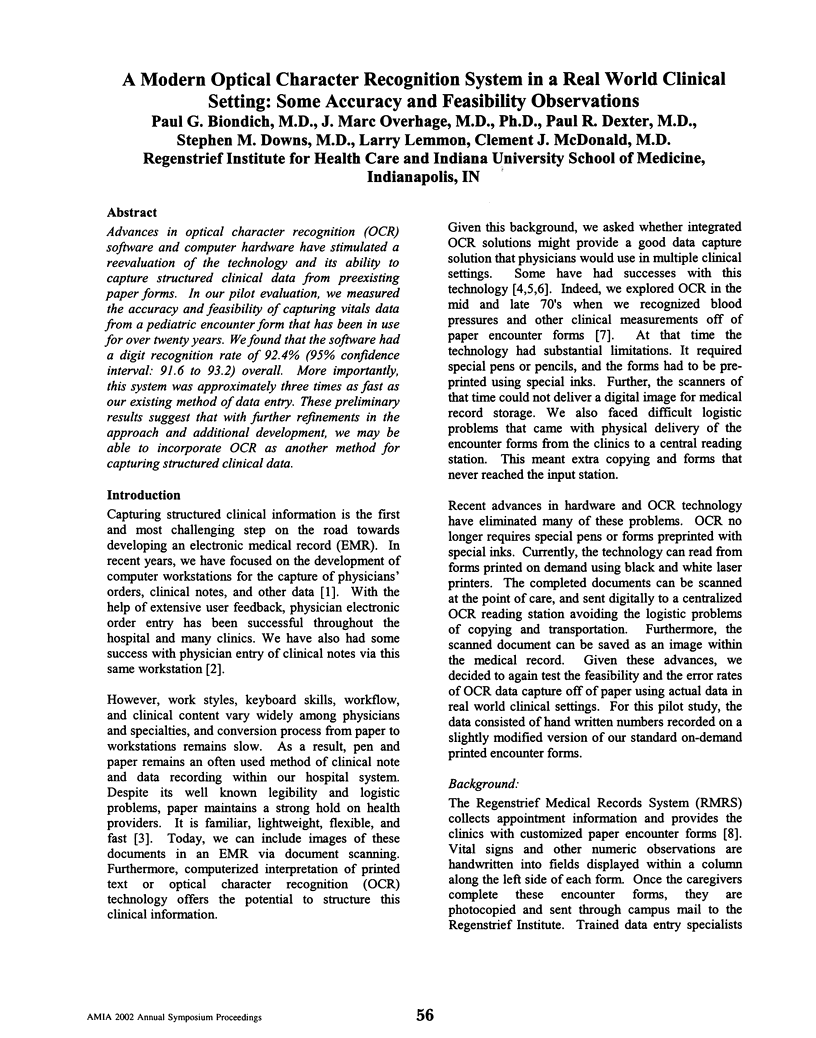
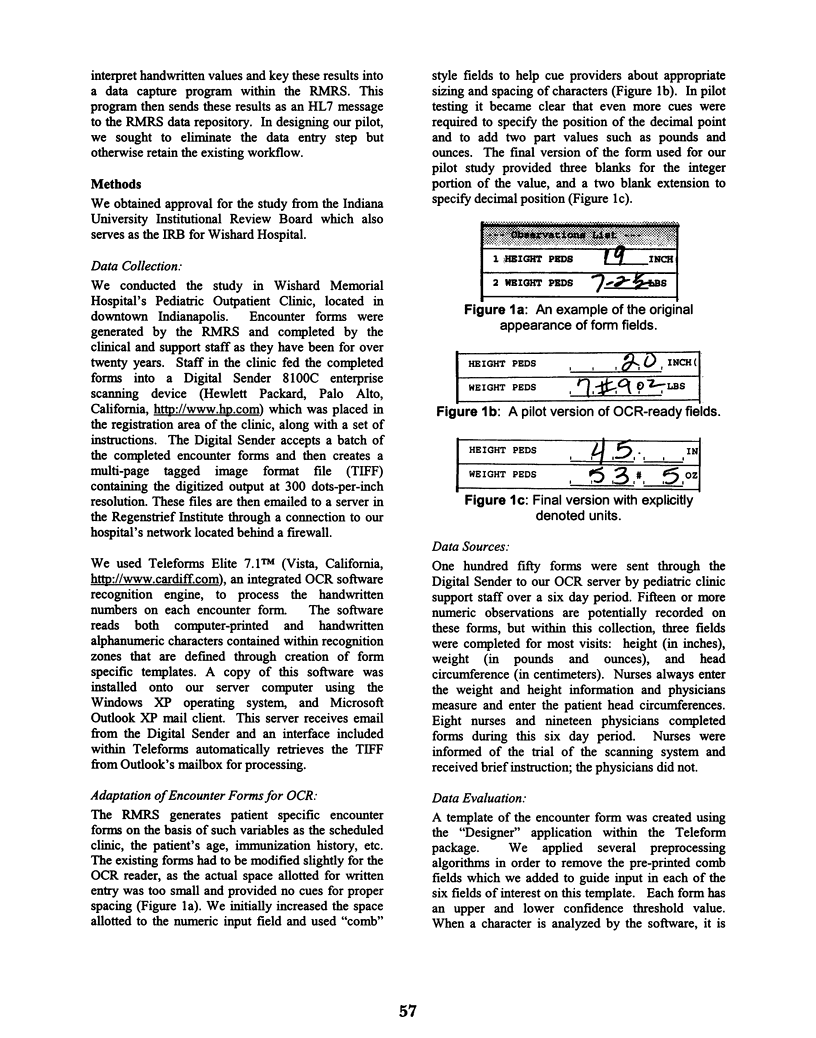
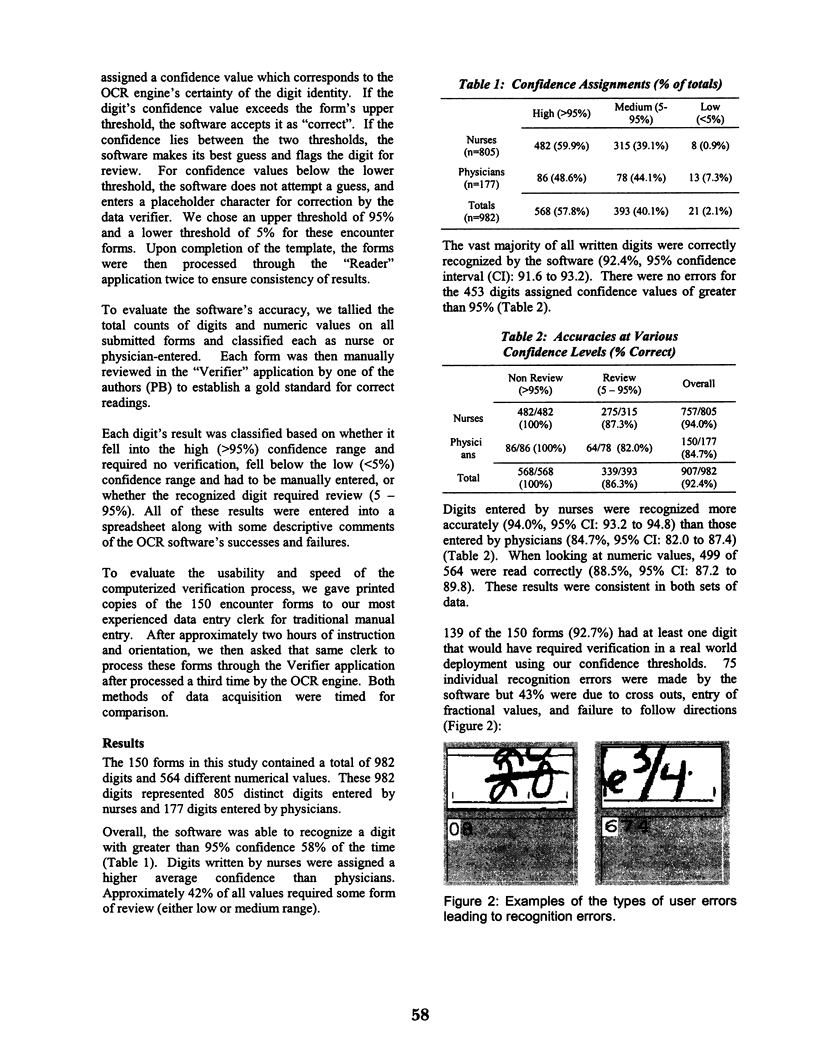
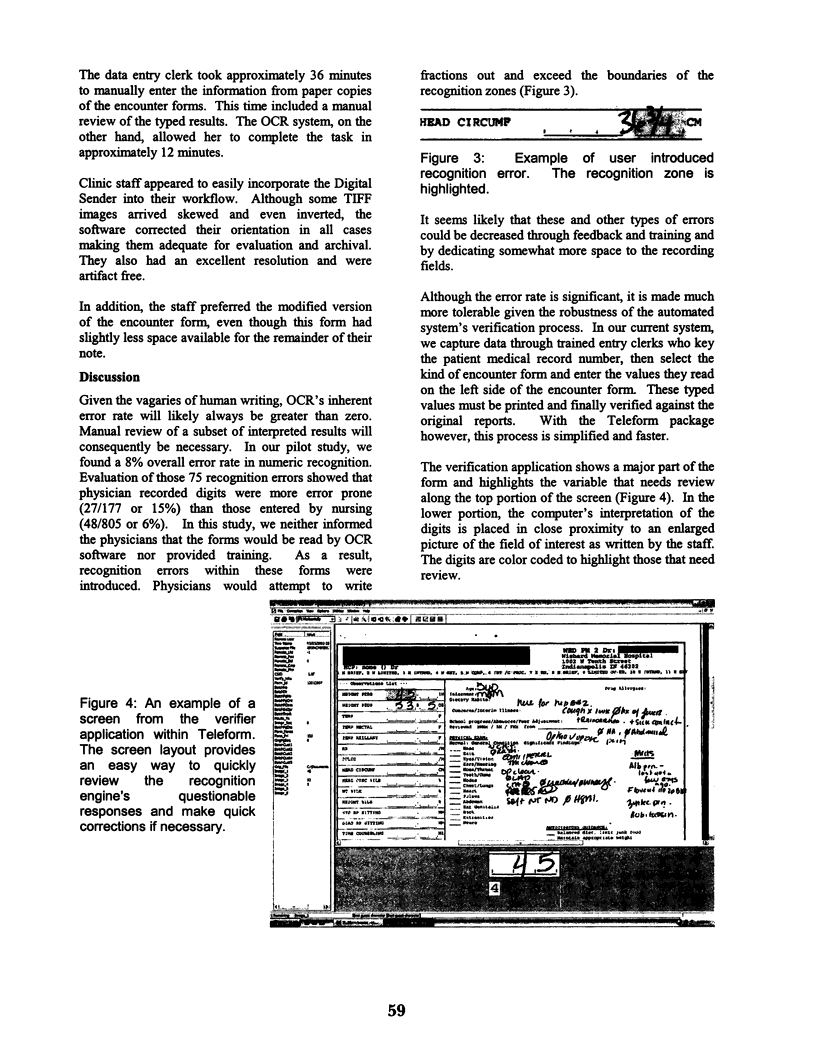
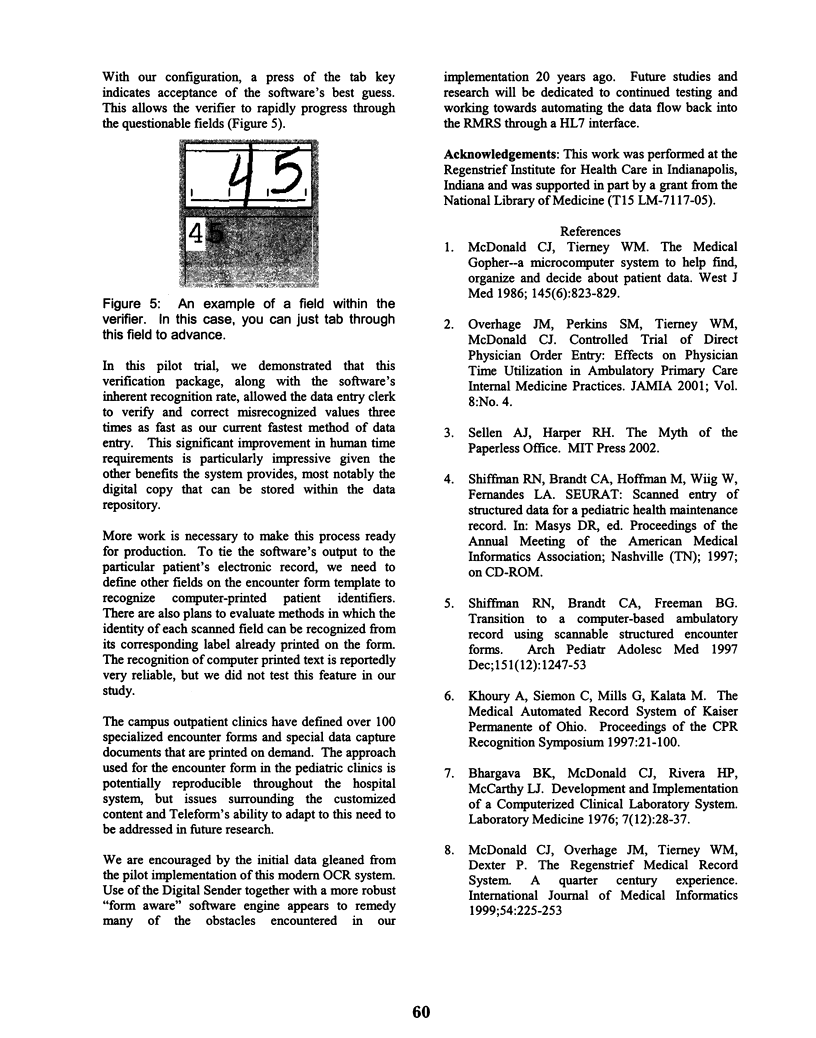
Selected References
These references are in PubMed. This may not be the complete list of references from this article.
- McDonald C. J., Overhage J. M., Tierney W. M., Dexter P. R., Martin D. K., Suico J. G., Zafar A., Schadow G., Blevins L., Glazener T. The Regenstrief Medical Record System: a quarter century experience. Int J Med Inform. 1999 Jun;54(3):225–253. doi: 10.1016/s1386-5056(99)00009-x. [DOI] [PubMed] [Google Scholar]
- McDonald C. J., Tierney W. M. The Medical Gopher--a microcomputer system to help find, organize and decide about patient data. West J Med. 1986 Dec;145(6):823–829. [PMC free article] [PubMed] [Google Scholar]
- Shiffman R. N., Brandt C. A., Freeman B. G. Transition to a computer-based record using scannable, structured encounter forms. Arch Pediatr Adolesc Med. 1997 Dec;151(12):1247–1253. doi: 10.1001/archpedi.1997.02170490073013. [DOI] [PubMed] [Google Scholar]


